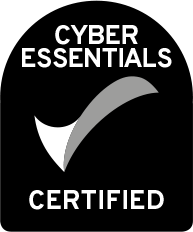Minimum Energy Efficiency Standards for Private Rented Property
If you are a Landlord of domestic and/or non-domestic private rented property and the Energy Efficiency Rating of that property (shown on the Energy Performance Certificate (EPC)) is F or G, then this article is relevant to you.
Under the Energy Act 2011, the Government has introduced legislation and regulations designed to improve energy efficiency in both domestic and non-domestic private rented properties
The key measures of the Minimum Energy Efficiency Standards (MEES) Regulations are that they:
1. Enable the tenant of domestic private rented property to request the landlord’s consent to the tenant making energy improvements to the property despite the fact that there may be restrictions on making improvements in the lease. Such consent cannot be unreasonably withheld, subject to certain limited exemptions.
2. Require landlords to ensure that their domestic or non-domestic private rented properties meet MEES (subject to some limited exemptions), failing which the landlord may not:
(a) Grant a new tenancy, extend or renew an existing tenancy of a domestic or non-domestic property on or after 1st April 2018;
(b) Continue to let a domestic property on or after 1st April 2020; or
(c) Continue to let a non-domestic property on or after 1st April 2023.
Is your property affected?
For the purposes of the MEES Regulations:
Domestic Private Rented Property is property let under a Tenancy that is:
- an Assured Tenancy for the purposes of the Housing Act 1988;
- a regulated tenancy for the purposes of the Rent Act 1977;
- a Tenancy specified in an Order made by The Secretary of State – currently this includes Assured Agricultural Occupancies, Protected Occupancies for the purposes of Section 3(6) of the Rent (Agricultural Act) 1976 and Statutory Tenancies for the purposes of the Rent (Agricultural Act) 1976.
There are exclusions from this definition:
- Low cost rental accommodation provided by a private registered provider or social housing, low cost home-ownership accommodation and property where the Landlord is a registered social landlord, owner-occupied property.
Non-domestic private rented property is:
- Any private rented property let under a Tenancy that is not a dwelling in England and Wales but excludes:property that does not require to have an EPC under the EPC Certificates Regulations 2007
- property that is not required to have an EPC under the Building Regulations 2010 or EPC Regulations 2012
- property let on a tenancy granted for a term certain not exceeding six months unless the Tenancy Agreement provides for renewing the term or for extending it beyond six months from its beginning or where the tenancy is granted, the Tenant has been in occupation continuously in excess of 12 months.
- property let on a tenancy granted for a term certain of 99 years or more
A property is sub-standard where its EPC shows it being below band E – i.e. it is in either band F or G on the EPC.
Where a property is sub-standard, the landlord has to carry out “relevant energy efficiency improvements” so as to bring it up to standard. The regulations specify the types of work that will qualify as being relevant energy efficiency improvements.
The validity or enforceability of a Lease or any provision in a Tenancy is not affected by the Landlord letting or continuing to let a sub-standard property and so the Landlord cannot terminate a Lease or Tenancy Agreement because he has failed to achieve the necessary requirements. However, the Landlord will still be in breach of the regulations and so liable to enforcement action!
Enforcement:
As from 1st April 2018, an enforcement authority can serve a penalty notice.
As at the date of writing this article, penalties are as follows:
(a) For letting a sub-standard property for less than 3 months from service of the penalty notice:
- Up to £2,000 for domestic property;
- The greater of £5,000 or 10% of the rateable value (up to £50,000.00) for non-domestic property
(b) For letting a sub-standard property for 3 months or more from service of the penalty notice:
- Up to £4000 for domestic property;
- The greater of £10,000.00 or 20% of the rateable value (up to £150,000.00) for non-domestic property
The penalties can also be published.
(c) For failing to provide the enforcing authority with information required to be supplied pursuant to a compliance notice:
- Up to £1000 for domestic property;
- Up to £5000 for non-domestic property.
The penalty can also be published.
What does this mean for you?
If the EPC shows the property within Band E or above, there should be nothing to worry about. If the property is shown as being within Bands F or G, don’t panic - it is quite possible that the Government may re-think its strategy in this area following Brexit, when it would be able to depart from the EU directive behind the Energy Act 2011.
However, the following should be considered.
When buying property to let, check the EPC and bear in mind that you may need to improve the energy efficiency of the building by the dates referred to above so as to be able to continue to let the property.
If you are granting a lease of an existing property and the term will end after either 1 April 2020 (domestic) or 1 April 2023 (non-domestic), it would be wise to carry out any necessary works to bring it above Band F before granting the Tenancy so as not to fall foul of the regulations during the course of the Lease Term.
It may be possible to incorporate some provision into the Lease requiring either the Tenant to bring the property up to standard or else allowing the Landlord to enter the premises during the Lease Term to bring it up to standard at the cost of the Tenant.
For further advice please contact Andrew Peach on 01306 502290 or [email protected].





